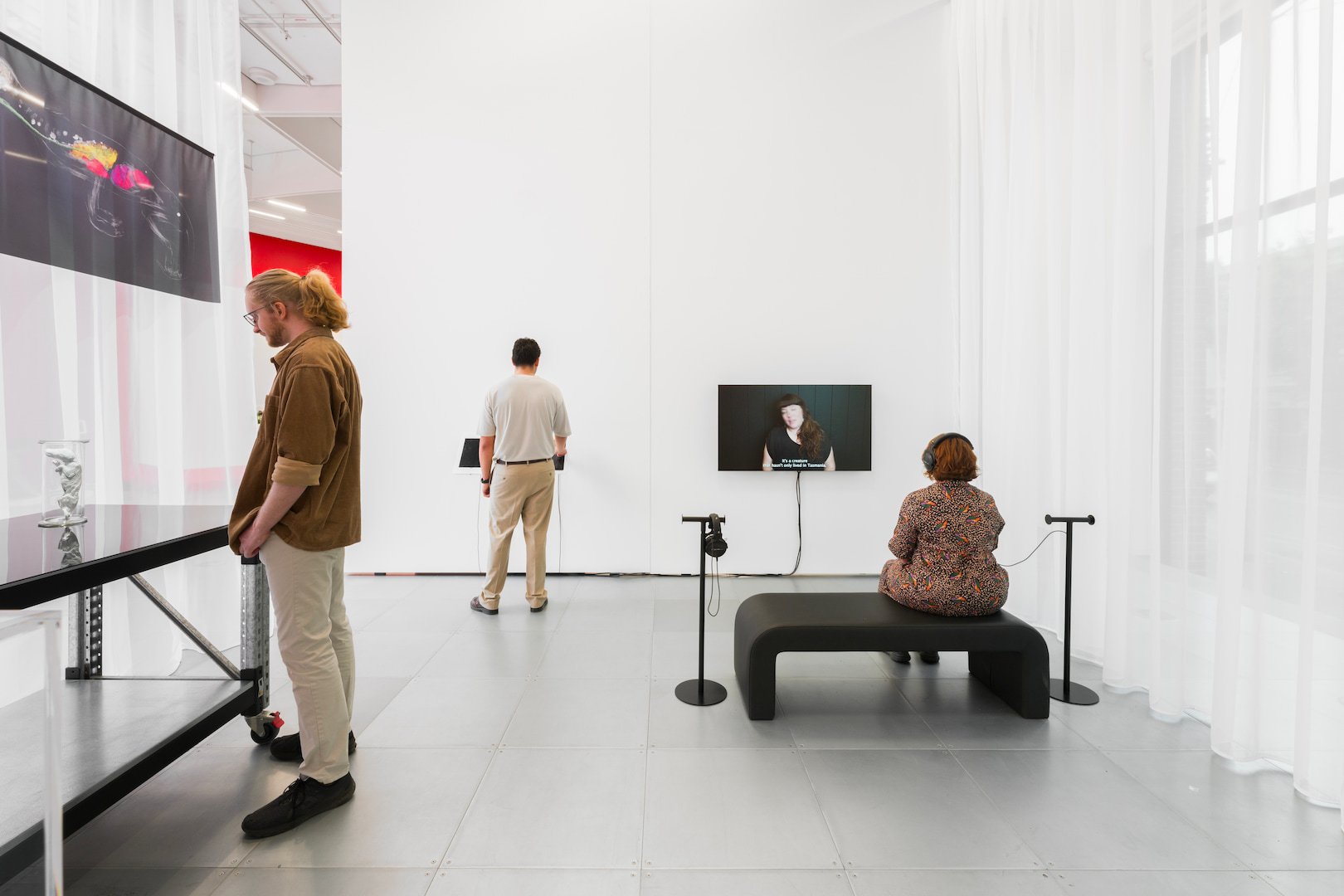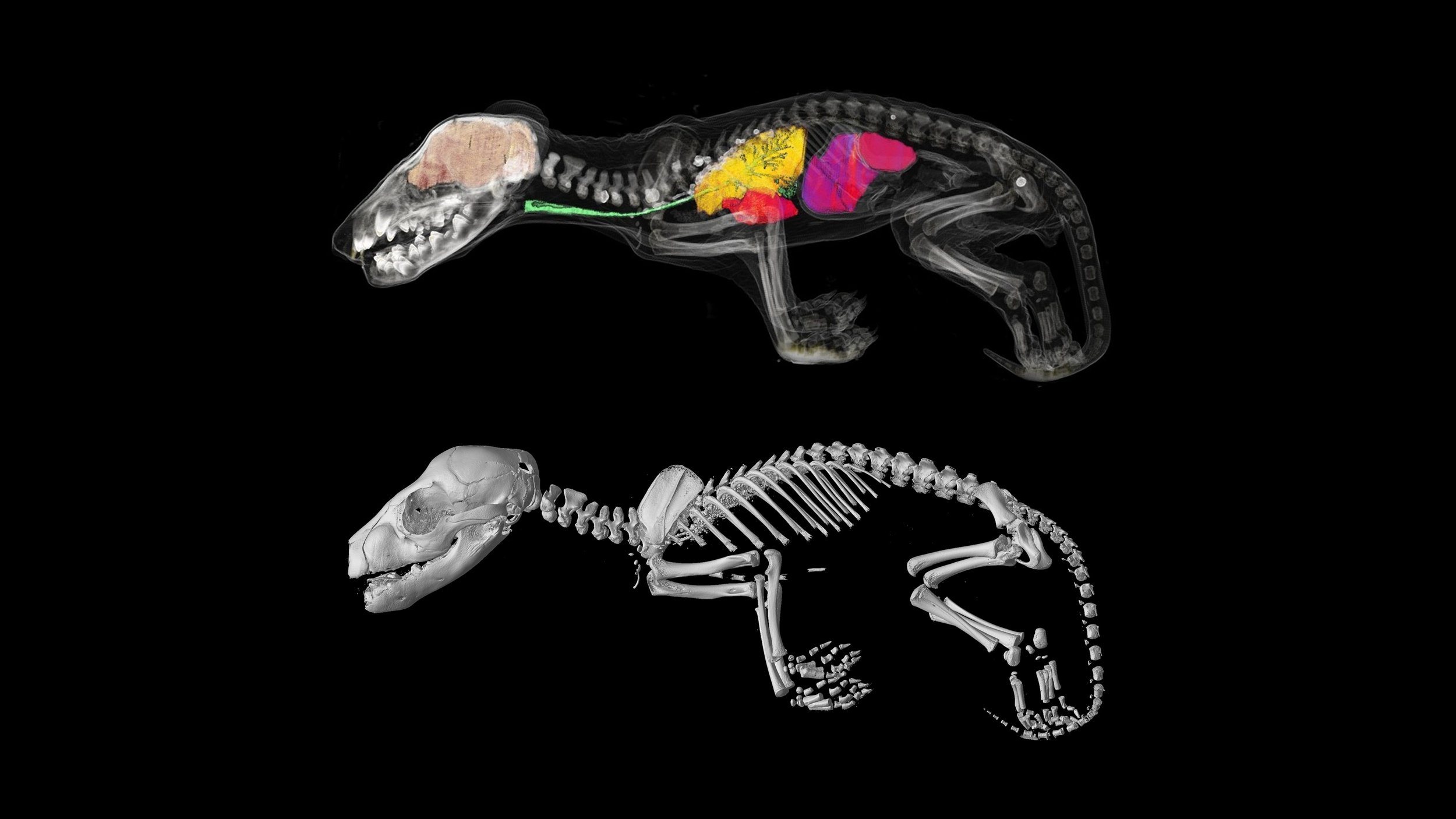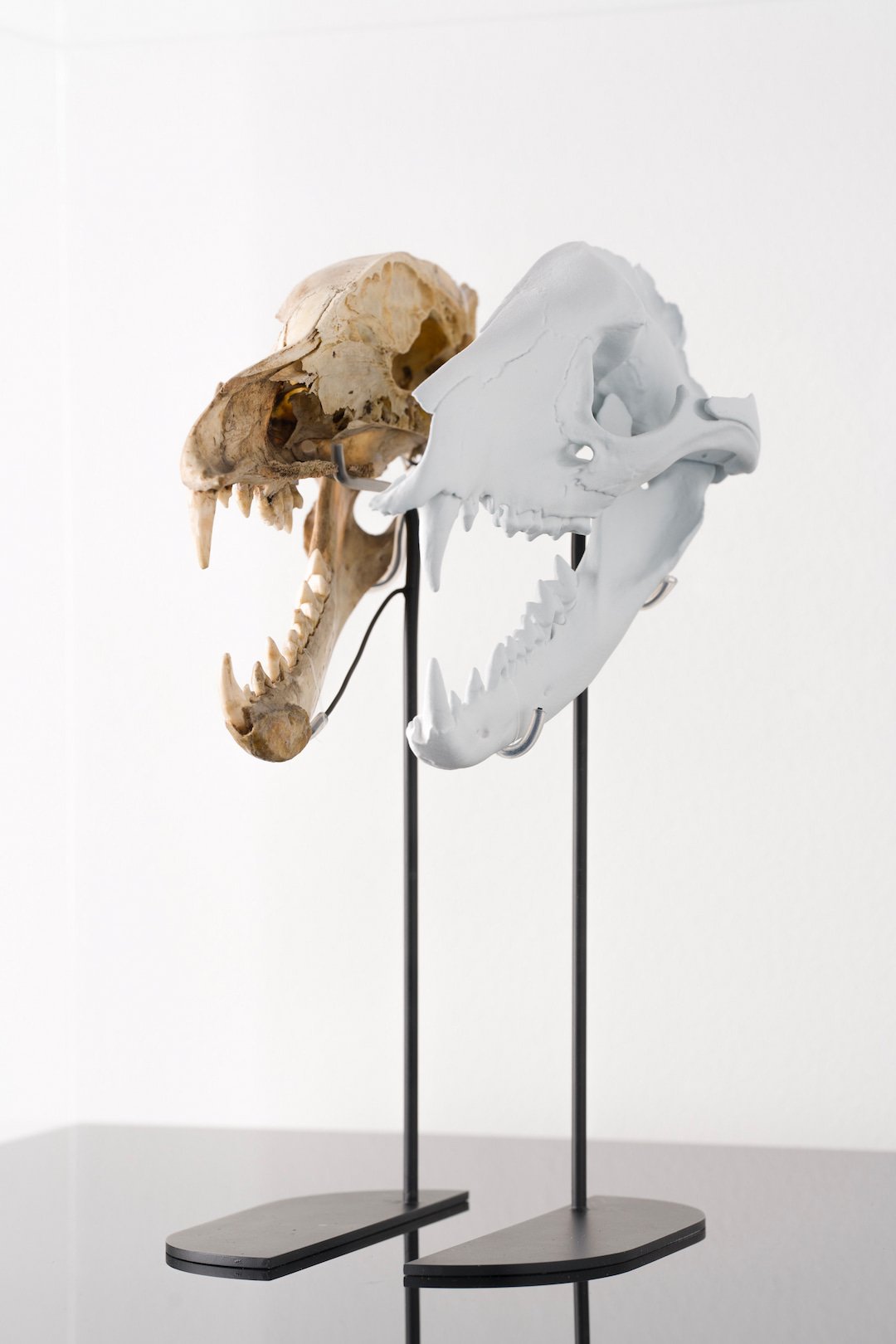THYLACINE DE-EXTINCTION PROJECT
Prof. Andrew Pask, Emma Bugg, Thylacine Integrated Genetic Restoration Research (TIGRR) Lab & Collaborators
Will we bring back the thylacine? Should we?
De-extinction is no longer the realm of a Jurassic Park fantasy – it’s going from science fiction to science fact. The Thylacine Integrated Genetic Restoration Research (TIGRR) Lab at the University of Melbourne is making huge strides in their research to de-extinct the thylacine (Tasmanian Tiger) as well as leading conservation efforts for our threatened marsupial species. But just because we can de-extinct this apex predator of the Tasmanian landscape, should we? Alternatively, do we in fact have a responsibility to do this now that the technology is in our reach?
Absorb the information on display, listen to expert and non-expert opinions and then come to your own conclusion. We invite you to respond to our in-gallery survey and let us know what you think.
What do we owe to our environment?
Prof. Andrew Pask is a developmental biologist and head of the Thylacine Integrated Genomic Restoration Research (TIGRR) Laboratory at the School of Biosciences in the University of Melbourne.
TIGRR Lab is located within the School of Biosciences, in the Faculty of Science at the University of Melbourne. The team has a diverse skill set in the fields of embryology, developmental biology, evolution, stem cell biology, genetics (incl. population), genomics, bioinformatics and conservation.
This thylacine (Thylacinus cynocephalus) skull was collected in the 1920s by Frederic Wood Jones, University of Melbourne’s Professor of Anatomy from 1930-1937. Wood Jones cut the skull in half to mount it on a display board for a museum exhibition. He took the other half of the skull with him when he returned to his native England, where it is now held by the Hunterian Museum in the Royal College of Surgeons, London.
Rohan Long is the curator of the Harry Brookes Allen Museum of Anatomy and Pathology in the Faculty of Medicine, Dentistry and Health Sciences at the University of Melbourne. He has been managing and curating biological museum collections at the University of Melbourne for over a decade, previously working as the collection manager of the Tiegs Zoology Museum from 2013 to 2018.
Emma Bugg is a Tasmanian jewellery designer and artist investigating the ways technology and material exploration can be embedded in jewellery to deepen connection and engagement with the piece. Compelled by a curiosity for secret codes, their practice looks at how jewellery can tell stories through materials, and continually investigates innovative ways technology can enhance the experience of jewellery.
Thanks to the Melbourne Trace Analysis for Chemical, Earth and Environmental Sciences (TrACEES) Platform for access to the micro-CT scanner and Dr. Jay Black for technical support and 3D rendering.
With special thanks to the following collaborators for their contributions to the project:
Dr. Axel Newton, Dr. Catriona Nguyen-Robertson, Chloe Woo, Ebony Ciarrocchi, Eliki Reade, Emily Scicluna, Erin Milne, Jemima Christie, Jennifer Hutchison, Dr. Jessica Clark, Jess Coldrey, Lauri Pavlovich, Prof. Megan Munsie, Dr. Mohammad Taha, Rita Cui, Rohan Long, Dr. Simon Coghlan, Tiffany Morelande.
Photography: Matthew Stanton



